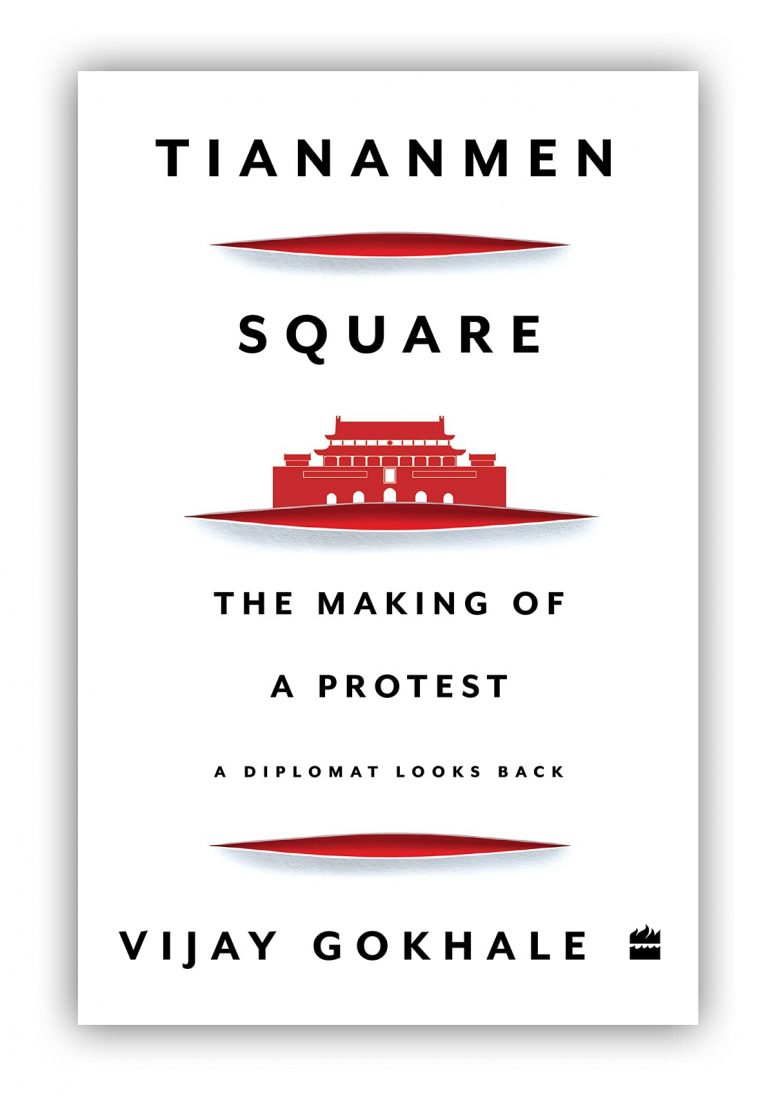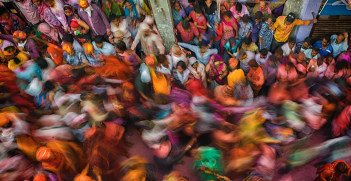Book Review: Tiananmen Square: The Making of a Protest

The Tiananmen Square Massacre offered a violent glimpse into the nature of Chinese politics under a communist government. In his new book, Indian diplomat Vijay Gokhale revisits his first-hand experience of the 1989 event.
The recent economic rise and military assertiveness of China has brought India the challenge of dealing with a superpower in its own backyard. However, as pointed out by journalist Ananth Krishnan, the paucity of Indian scholarship and journalistic coverage about China’s political system, foreign policy, and society in general translate into a suboptimal public discourse on the issue. Added to the problem is the lack of substantial Indian diplomatic writings on China. In this context, former foreign secretary Vijay Gokhale’s account of the Tiananmen Square massacre in 1989 provides a valuable Indian perspective into a key transformative event in our Himalayan neighbour’s contemporary past.
Gokhale’s slender volume focuses on the student protest movement as an important Indian revisionist account of the event that attracted global attention and condemnation. Serving as a junior diplomat in Beijing in that fateful year, he brings an eyewitness account that contrasts the western narrative. In Tiananmen Square: The Making of A Protest, the author’s ringside view is ably supported by a host of sources including the Tiananmen papers, declassified US documents, the secret memoir of Zhao Ziyang, western media coverage, and analysis of Chinese media reportage. As a result, the book comes out not just as a personal memoir, but also as a sound analytical account of the broader context in which the student movement and the Chinese Communist Party’s (CCP) response transpired.
The fluid narrative consists of two parts, beginning with the context in which the protest movement emerged followed by the drama itself that unfolded in the months of April-June. The stage is set in the first half of the book as Gokhale provides a perceptive analytical account of major actors belonging to the CCP. While Deng Xiaoping was indisputably at the core, other leaders including the Elders, Li Peng, Hu Yaobang, Zhao Ziyang, and later Jiang Zemin also played an important role. The intra-party elite rivalry for power and ideological contestation that is described in great detail provide the much-needed context in which policy decisions were taken and the CCP responded to the protest movement. Also analysed in the first half of the book is the worsening political and economic situation─ characterized by runaway inflation, credit crunch, and corruption─ that no doubt contributed to popular unrest. Gokhale’s account clarifies that policy debates over the course of economic development also served as an avenue for power contestation within the CCP. The second half of the book describes the gradual unfolding of protests and the contingent, spontaneous nature of the movement. It is here that the book makes a novel contribution to our understanding of the Tiananmen Square incident.
As any good work of history is supposed to outline, this book also illustrates the unrealized possibilities that might have altered the course of history. For a world increasingly becoming accustomed to China’s return to Mao’s days as Xi Jinping centralizes power, it is interesting to note the extent to which liberal ideas were part of the discourse in the mid-1980s. Of notable importance here are the former General Secretary Hu Yaobang, Deng’s chosen heir who fell from grace as he pushed for political liberalization; intellectuals like Fang Lizhi; and Qin Benli’s World Economic Herald newspaper. Ultimately, it was the death of Hu Yaobang that provided the spark as students gathered spontaneously to mourn the leader. The gathering soon turned into an anti-party protest, incensed in no less measure by the publication of the People’s Daily editorial on 26 April that labelled students as counterrevolutionary elements fomenting turmoil.
The conventional narrative has portrayed the protest movement as a bid for democratization. However, the author argues that “the students’ concerns were overwhelmingly limited to their grievances.” These grievances mainly related to better job and education opportunities, the problem of elitism, and the demand for some personal freedom. As a junior diplomat who was present at the moment, Mr. Gokhale liberally disses western diplomats and press for getting things wrong. In his analysis, it was the ideological predisposition of these western actors and their reliance on unsubstantiated one-sided rumours, often fed by protesting students, that led to misleading and wishful takes. Indeed, much of the criticism of the western narrative on the Tiananmen protest as a pro-democracy movement seems warranted. However, it must be mentioned that the author’s own account shows that the demand for press freedom formed a crucial plank of the protest. For instance, many media people were also among the citizens marching alongside students against press censorship as evident in the suppression of the liberal newspaper World Economic Herald.
Apart from the western diplomats and foreign press, the other group that receives uncharitable treatment in this revisionist account is protesting students. The glamorous image of idealistic students sitting on hunger strike for democracy is shattered by the frequent U-turns, infighting, and theatrics of major student leaders that plagued the movement from the beginning. Increasingly, the radicals came to dominate the movement and indecision characterized the modus operandi. For the CCP and Deng, the push came to shove with the appearance of the Styrofoam-made Goddess of Democracy in the Square on 30 May.
On 3 June, Deng sent in regular troops to properly enforce Marshall law which was already imposed but was disobeyed by local citizens. What transpired on the midnight of 3-4 June when the Square was vacated has remained a matter of great speculation. It has not helped that the movement of foreign media was severely restricted on that fateful night. In a major revisionist take, however, Mr. Gokhale asserts that there basically was no massacre in the Square as the CCP “regained its control over Tiananmen Square, likely without firing a shot inside the square.” It is probably this claim that would face the most intensive scrutiny from other China scholars in the coming days.
In the aftermath of the suppression of the movement, the United States initially imposed sanctions and suspended aid only to abandon these measures immediately for a policy of engagement. The move came less than three weeks after the “massacre” as National Security Advisor Scowcroft and Deputy Secretary of State Eagleburger reached China. In the book, Mr. Gokhale is scathingly critical of the US hypocrisy in its pursuit of economic self-interest while making grand pronouncements about the promotion of human rights and democracy.
Lastly, one could quibble that for an otherwise slender but excellent Indian revisionist account, leaving out the Indian response to the Tiananmen incident comes as surprising. The Indian liberal activist S V Raju condemned both the massacre and the US volte-face on its commitment to human rights. The news of the brutal suppression of the movement divided the leftist public opinion in New Delhi’s Jawaharlal Nehru University (JNU). The students’ union led by the Students’ Federation of India (SFI), the student wing of the Communist Party of India (Marxist), backed the CCP regime and claimed the massacre did not happen. The union, though, had to face a massive backlash from other JNU students and consequently, the SFI faced defeat in the October 1989 union election. The Indian government under Rajiv Gandhi signalled to China the unwillingness to meddle in its internal affairs by pairing down the coverage of the massacre on the state television. The underlying explanation was Rajiv’s desire to not scuttle the recent gains he made in the normalization of relations with China during his December 1988 trip.
Sanjeet Kashyap is a final year MA student in Politics and International Studies program at Jawaharlal Nehru University, New Delhi. Twitter: @sanjeet38.
This article is published under a Creative Commons License and may be republished with attribution.





